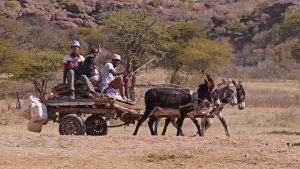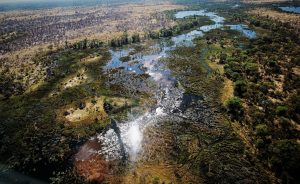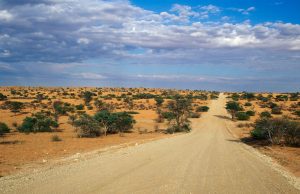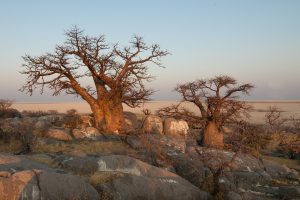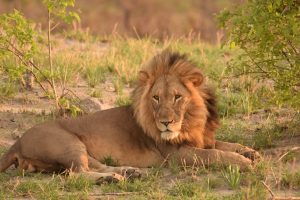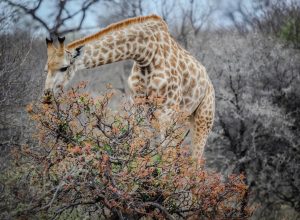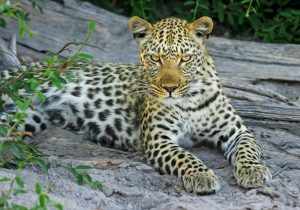Zimbabwe
October 20, 2023Indian Ocean Islands
October 20, 2023I have had the privilege and pleasure of visiting Botswana twice, both in the summer and winter seasons.
Botswana’s tourism policy is generally based on ‘low volume – high value’, in other words they like to attract tourists who are willing to pay a higher price for a once-in-a-life-time experience, much the same philosophy as Tanzania. This does not mean that you need plenty of money; it just means that there won’t be a host of tour groups concentrated in one place. Appealing isn’t it? People who have chosen to visit this country have done so with the mindset to not only escape the hustle and bustle of everyday life to experience a piece of tranquility but also to discover the immense beauty that Botswana has to offer as well as observe the diverse culture of its people.
The lodges and campsites are designed to accommodate fewer tourists, maximising the unique and exclusive experience. I enjoy this idea as some National Parks, in other countries, which I have visited, have larger camps and far too many sight-seeing vehicles on the roads. Some of the lodges in the Okavango Delta are only reachable by a chartered plane, which is an experience within itself.
When staying in the National Parks, your experience of the wildlife will be one of a kind. Most of the luxury lodges and standard campsites offer a “one-with-nature” experience as they are unfenced, permitting the wildlife the freedom to roam through the camp, especially at night. Thus all safety precautions need to be honoured as we respect the environment befitting to the wildlife and game rangers and camp guards are always available ensuring that your safety comes first.
Once I had one of these “one-with-nature” encounters whilst taking an outdoor shower alongside our chalet. I heard a low rumbling sound not far off. My first thought was a plane but within minutes I froze as out of nowhere an elephant appeared, ambling past the shower disappearing into the bush. What an enthralling experience!
Botswana is home to a number of National Parks, each boasting a unique landscape. From the uncommon scenery of the delta to the hot and arid desert, each park has an unmatched presence. Below in some detail I have outlined a few of the numerous National Parks and places of interest.
Okavango Delta
Listed as UNESCO’s 1000th World Heritage Site, the Okavango Delta is one of the largest inland deltas in the world. Imagine that? It has an extremely diverse ecosystem attracting a myriad of animals to its unspoilt wilderness area, including Africa’s Big Five, namely the Elephant, Buffalo, Rhinosauras, Lion and Leopard.
A “Mokoro” (dugout canoe) is the principal means of transport for the local people inhabiting the Delta. For the tourist, it affords you a tranquil and extraordinary journey through a breathtakingly beautiful, memorable setting. Meandering channels connect a maze of marshlands, abundant lagoons and seasonally flooded plains. These channels are created by the Okavango River (described as “the river that never finds the sea”), which originates in the Angolan highlands and gradually meanders to the basin of the Kalahari Desert. I once watched a David Attenborough documentary on the Delta and found it incredible with all the intricate facts that he presented about this unique ecosystem.
Chobe National Park:
Known for its large herds of elephant and boasting the Big Five, Chobe National Park is certainly high up there on one’s bucket list. To be able to sit on the river-front, particularly in the dry season, and watch these colossal beasts drink their fill is mesmerising. Of course there’s no better way to admire the view than with a Gin and Tonic (G&T) in hand.
One of the most popular means to experience Chobe’s diverse wild life is to indulge in a riverboat cruise. This offers you a spectacular opportunity to take in all that inhabits the water and its surrounds, such as crocodiles, hippos, water buffalos, and a variety of magnificent bird species. There is something so surreal about being on a riverboat, sipping a delicious cold beverage and witnessing a beautiful African sunset.
Kgalagadi Transfrontier National Park was established in collaboration with South Africa as the first transfrontier park in Africa, meaning that the Park crosses the international boundaries of both Botswana and South Africa with the primary focus being the conservation of wildlife. Primarily consisting of dry river beds, the Kgalagadi ensures excellent game viewing. Chances to view large predators such as Lion, Leopard, Cheetah and Hyena are extremely high. Not forgetting the smaller predators such as the Bat-eared Fox, Yellow Mongoose and Suricate. Naturally where there are predators there are prey such as Springbok, Impala, Gemsbok and Red Hartebeest and recently they reintroduced Giraffe. Enthusiastic bird-lovers have the opportunity to view over 200 species of which 34 species are raptors. The landscape and wildlife offer the most outstanding photographic opportunities, with captivating light and splendid scenery collaborating through the camera’s lens.
Makgadigadi Pans:
The Makgadigadi Pans is one of the largest salt pans in the world. History foretells it to once have been one of the biggest inland lakes in Africa. The surface is too salty to accommodate any vegetation; however the borders are covered with grasslands and some areas are home to the all impressive baobab tree. The Pans’ famous for its hundreds of thousands of flamingos that arrive during the wet season which occurs between March and April (the best time to visit). It’s during this season that large herds of Zebra and Blou Wildebeest begin migrating west to the Boteti Region as well as other species of antelope such as Gemsbok, Eland, Red Hartebeest, Kudu, Springbok, Bushbuck, Steenbok, Duiker, Giraffe and even Elephant.
Several other Parks in Botswana worth visiting include Khama Rhino Sanctuary, Moremi Game Reserve, Thuli Block and Central Kalahari Game Reserve.
Some Interesting Facts:
We love facts, they make for great conversation around the dinner table and it makes you look like a “bright” person 😉
- The Okavango Delta is the largest inland delta in the world.
- Botswana is home to the world’s largest concentration of Elephants in Southern Africa. The highest concentration is to be found in Chobe National Park. Did you know that the African Elephant can live up to 80 years?
- The Makgadigadi Pans is one of the largest salt pans in the world, stretching over an area of 12,000 sq km.
- The currency used is called Pula and is divided into Thebe. In Setswana (the local language) this means ‘rain’ and ‘shield’.
- The Border between Botswana and Zambia is only 150 meters wide, which makes it the smallest border in the world. You cross between the two countries via the Kazungula ferry on the Zambezi River. I hope the bridge never gets built!
- Currently, Botswana is one of the most prosperous countries in Africa.
- Botswana is the world’s biggest diamond producing country in terms of value and the second biggest in terms of production. Diamond revenue enables every child in Botswana to receive free education up to the age of 13 years.
- The current president, Ian Khama, is the son of Botswana’s first president after independence, Sir Seretse Khama and his wife Ruth Williams, who is of British origin. He was born in 1953 in England while his parents were in exile in the UK due to their interracial marriage. There is an incredible movie about the challenges leading up to the Independence of Botswana called “A United Kingdom” which is a must see.
When is the best time to visit the Botswana
A good question to ask.
May to October – Dry Season – Winter
- Less vegetation and animals concentrate around waterholes and rivers, making wildlife easier to spot.
- The skies are clear, rain is rare and there are fewer mosquitoes.
- Even though most tourists visit during the Dry season, the parks still feel uncrowded, except for the bustling Chobe’s riverfront.
- It gets cold at night and in the mornings. Packing warm winter clothing during June, July and August for the cold morning game drives is advisable.
November to April – Wet Season – Summer
- The scenery is greener and there are lower rates during this low season.
- Although wildlife is easier to spot in the Dry season, you’ll still see plenty, including newborn animals and migratory birds.
- Except for January and February, rains are mostly short afternoon showers and seldom have a negative impact on your trip.
- During January and February the rains can be continuous for days.
- It gets very hot in October and November.
- Some lodges and camps close down during part of the Wet season.

